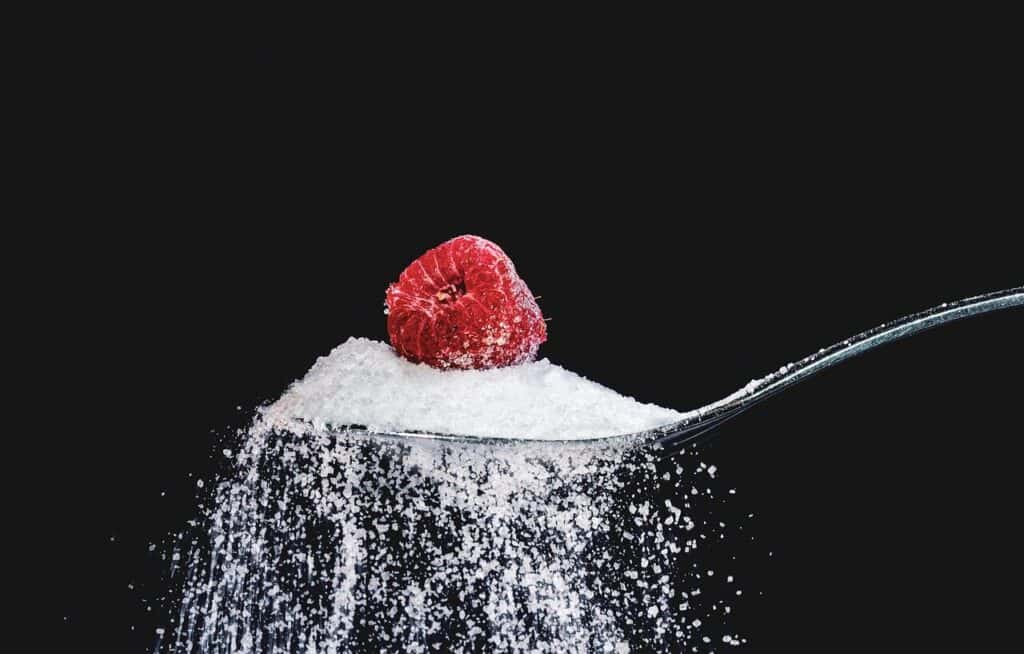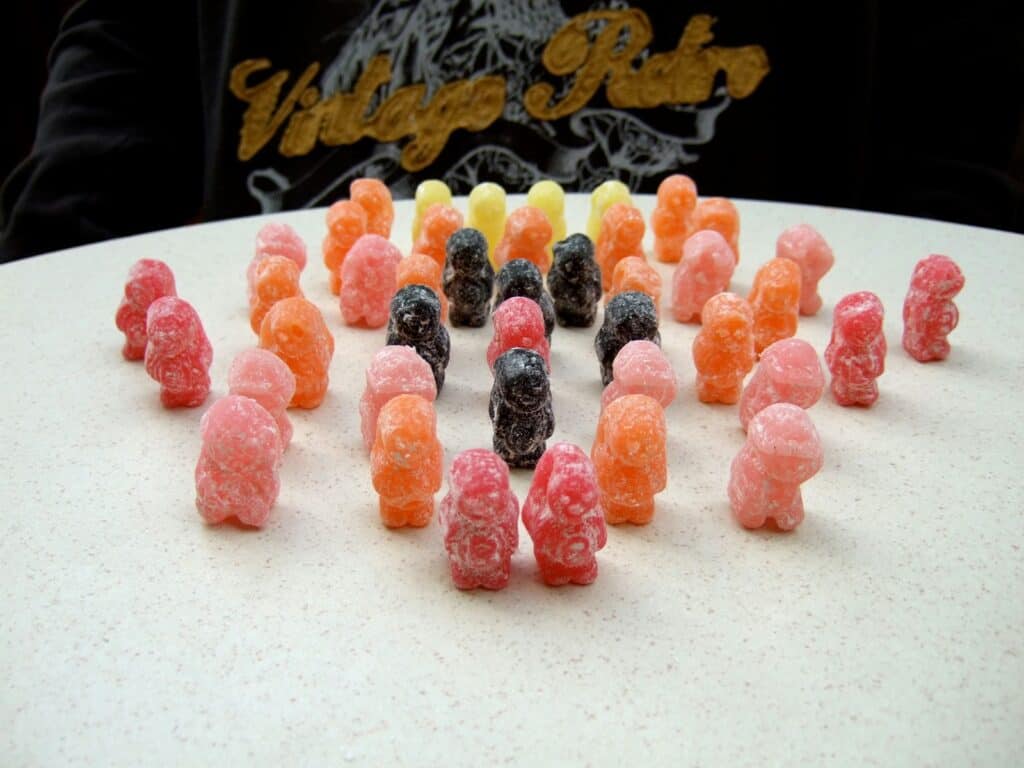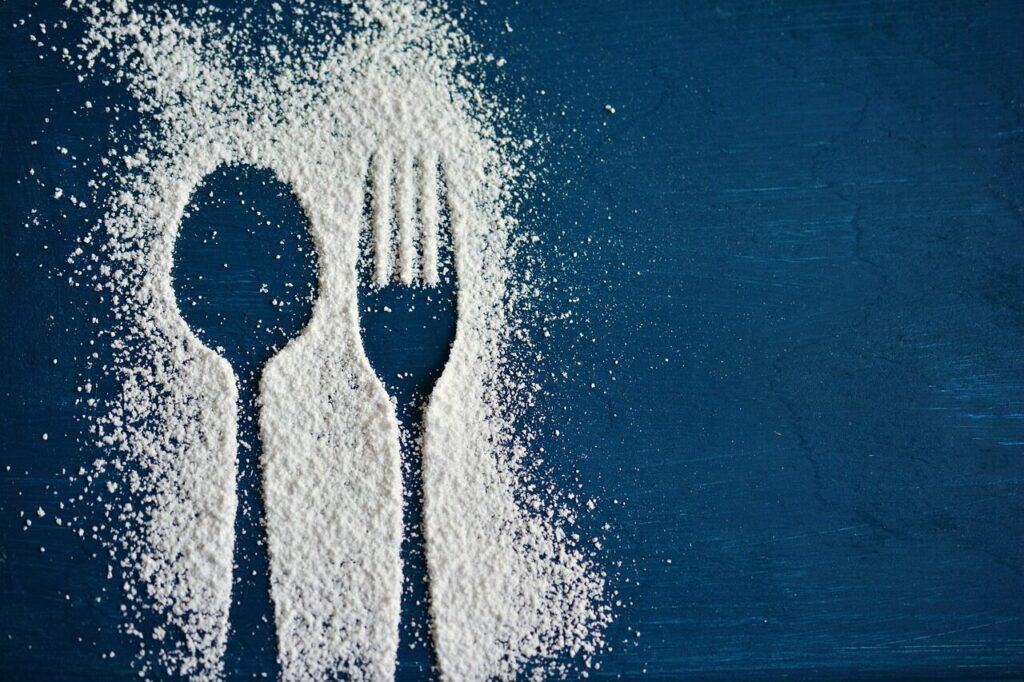La Ciencia del Azúcar Tirado: Un Análisis Técnico de la Formación del Azúcar Tirado
Introducción
La formación de tiras de azúcar no es sólo un truco de cocina. Es una forma controlada de transformar el azúcar cristalino normal en algo completamente distinto: un material liso parecido al vidrio. Este proceso crea algo con propiedades especiales que lo hacen elástico y moldeable.
Aprender esta habilidad no consiste en memorizar recetas. Se trata de entender cómo se comportan las moléculas de azúcar cuando las calientas y trabajas con ellas. Quieres crear un sólido estable que sea básicamente un líquido superenfriado.
Esta guía va mucho más allá de unas simples instrucciones paso a paso. Profundizaremos en los principios técnicos que controlan la formación de tiras de azúcar. Estos conocimientos le ayudarán a trabajar con precisión y a solucionar los problemas cuando surjan.
La química molecular del azúcar: Del cristal al vidrio
Para trabajar eficazmente con el azúcar, hay que entender qué es realmente. El paso de cristales granulosos a material liso y flexible se basa en cambios químicos y físicos. Esta base es importante para todos los pasos siguientes.
Comprender la estructura de la sacarosa
El azúcar de mesa común, llamado sacarosa, es el ingrediente principal de la mayoría de los trabajos tradicionales con azúcar. Su comportamiento plantea retos y oportunidades.
- La sacarosa: Un disacárido.
- Componentes: Una molécula de glucosa unida químicamente a una molécula de fructosa.
- Estado natural: Sólido cristalino muy ordenado y estable.
Su principal objetivo en la formación de tirones de azúcar es romper por completo esta estructura cristalina rígida. Y lo que es más importante, tienes que impedir que vuelva a formarse cuando el azúcar se enfríe.
El proceso de inversión
La "inversión" es una reacción química clave en la cocción del azúcar. Rompe el enlace que mantiene unidas la glucosa y la fructosa en la molécula de sacarosa.
El calor inicia esta reacción. Un ácido como el cremor tártaro o el zumo de limón la acelera. El resultado final es una mezcla de glucosa libre y fructosa llamada "azúcar invertido".
El azúcar invertido es crucial. Sus moléculas desordenan el patrón uniforme que necesita la sacarosa para volver a formar cristales. Añadir jarabe de glucosa hace lo mismo. El jarabe de glucosa contiene distintos tipos de moléculas de azúcar. Estas moléculas complejas impiden físicamente que la sacarosa se alinee formando cristales. Este garantiza su producto final se mantiene suave.
Alcanzar el estado amorfo
El objetivo final de la cocción del azúcar para tirar es crear un estado amorfo estable. La gente suele llamar a esto un cristal de azúcar. Se trata de materia sólida pero completamente desorganizada a nivel molecular.
Esto se consigue calentando el jarabe de azúcar a altas temperaturas para eliminar casi toda el agua. A continuación, se enfría rápidamente. Este enfriamiento rápido no da tiempo a las moléculas de azúcar a organizarse de nuevo en estructuras cristalinas ordenadas.
En su lugar, se congelan al azar. Forman lo que se llama un líquido superenfriado. Imagina una pila ordenada de ladrillos que representan cristales de azúcar. Ahora imagina que tiras esos ladrillos al azar en el suelo. Ese montón desordenado representa el cristal amorfo.
Esta estructura única, no cristalina, confiere al azúcar extraído sus propiedades esenciales. Se vuelve plástico y manejable. Se puede estirar y moldear.
Variables críticas: Temperatura, tiempo y proporciones
El éxito de la formación de azúcar depende de variables que se pueden controlar. Ser preciso con la temperatura, comprender el papel del agua y acertar con las proporciones no son sólo buenas prácticas. Son requisitos científicos para obtener resultados predecibles.
Mapping Sugar Cooking
La temperatura es la variable más importante en la cocción del azúcar. Está directamente relacionada con la concentración final de azúcar y el estado molecular. Cada etapa de cocción representa un porcentaje específico de azúcar respecto al agua. Esto determina cómo se comportará el jarabe enfriado.
Para extraer el azúcar, el objetivo es la fase de "craqueo duro". A esta temperatura, el contenido de agua es tan bajo (alrededor de 1%) que el sirope se enfría hasta alcanzar el estado quebradizo y vítreo que se necesita para extraerlo.
Cuadro 1: Guía técnica de las fases de cocción del azúcar
Nombre de la etapa | Rango de temperatura (°C) | Rango de temperatura (°F) | Concentración de jarabe | Descripción técnica y casos prácticos |
Hilo | 106-112°C | 223-234°F | ~80% | El jarabe forma hilos finos; se utiliza para jarabes ligeros, algunos glaseados. |
Balón blando | 112-116°C | 234-240°F | ~85% | El sirope forma una bola blanda y maleable en agua fría; se utiliza para dulce de azúcar, fondant. |
Bola firme | 118-120°C | 244-248°F | ~87% | El sirope forma una bola firme; se utiliza para caramelos. |
Bola dura | 121-130°C | 250-266°F | ~92% | El sirope forma una bola dura y rígida; se utiliza para turrón, malvaviscos. |
Grieta blanda | 132-143°C | 270-290°F | ~95% | El sirope forma hilos firmes pero flexibles; se utiliza para toffee, butterscotch. |
Grieta dura | 149-154°C | 300-310°F | ~99% | El jarabe se vuelve quebradizo. El estado ideal para crear un vaso para el azúcar tirando y soplando. |
Caramelo | 160-177°C | 320-350°F | >99% | El azúcar empieza a descomponerse y caramelizarse, cambiando de color y sabor. Demasiado tarde para tirar. |
El papel del agua
El agua con la que empiezas disuelve el azúcar cristales. El contenido final de agua, determinado por la temperatura máxima de cocción, decide la estabilidad de la pieza acabada.
Al azúcar le encanta el agua. Atrae y absorbe fácilmente la humedad del aire. Esto convierte a la humedad en tu mayor enemigo cuando trabajas con piezas de azúcar acabadas.
La humedad elevada hace que las superficies de azúcar estirado se vuelvan pegajosas al absorber agua. Esto provoca una pérdida de brillo, una estructura débil y, finalmente, el colapso.
Las cocinas profesionales siempre controlan los niveles de humedad. En los días húmedos, cocinamos el azúcar hasta el extremo superior del rango de dureza (alrededor de 154°C / 310°F). Esto elimina la mayor cantidad de humedad posible y crea productos finales más estables y resistentes.
Formular para el éxito
Una receta de azúcar no es sólo una lista de ingredientes. Es una fórmula química. La proporción de sacarosa y agentes interferentes, como el jarabe de glucosa o el jarabe de maíz, influye decisivamente en el comportamiento del azúcar.
Una mayor proporción de jarabe de glucosa crea un azúcar más plástico y menos propenso a cristalizar. También permite trabajar durante más tiempo. Esto hace que sea más indulgente con las piezas complejas. Sin embargo, puede dar lugar a productos finales ligeramente menos brillantes o claros.
Una fórmula con porcentajes muy altos de sacarosa y un mínimo de agentes interferentes será excepcionalmente clara y brillante. Pero es extremadamente sensible. Será más quebradiza y mucho más propensa a recristalizar si no se manipula con una técnica perfecta.
Análisis de ingredientes: Elegir el material adecuado
La elección de su base de azúcar es una decisión fundamental. Influye en todo el proceso de producción y en las características de la pieza final. Comprender las diferencias técnicas entre los ingredientes más comunes le ayudará a tomar decisiones informadas en función de los objetivos específicos del proyecto.
Sacarosa frente a Isomalt
En la pastelería tradicional se utiliza sacarosa. Pero en la pastelería moderna se suele utilizar isomalt para decorar. El isomalt no es azúcar, sino un alcohol de azúcar (poliol) obtenido a partir de la sacarosa. Ofrece importantes ventajas técnicas.
La comparación de sus propiedades demuestra por qué el Isomalt se ha convertido en el preferido para los trabajos de competición y exhibición, en los que la longevidad y la claridad son lo más importante.
Tabla 2: Análisis comparativo de los azúcares de extracción
Característica | Jarabe a base de sacarosa | Isomalt | Implicaciones técnicas de la extracción de azúcar |
Tipo químico | Disacárido | Alcohol de azúcar (poliol) | El isomalt tiene una estructura molecular diferente, lo que lo hace más estable. |
Cristalización | Alta tendencia | Tendencia muy baja | El isomalt es mucho más tolerante y fácil para los principiantes; requiere menos agentes interferentes. |
Higroscopicidad | Alta | Bajo | Las piezas de isomalt permanecen estables y no se pegan durante mucho más tiempo, especialmente en condiciones húmedas. |
Claridad y color | Tiende a amarillear/caramelizarse a fuego alto. | Se mantiene transparente incluso a altas temperaturas. | El isomalt es superior para crear piezas vítreas e incoloras o para colores vibrantes y verdaderos. |
Plasticidad | Buen tiempo de trabajo pero puede volverse quebradizo rápidamente. | Mayor alcance del plástico, lo que proporciona más tiempo para tirar y dar forma. | Isomalt ofrece una ventana de trabajo más amplia y estable. |
Pruebe | Dulce | Ligeramente dulce (~50% de sacarosa) | La sacarosa es mejor para componentes comestibles en los que se desea dulzor. El isomalt se utiliza sobre todo en decoración. |
La función de los aditivos
Los aditivos no son aromas opcionales. Son ingredientes funcionales que realizan tareas químicas específicas para garantizar la estabilidad de la masa de azúcar.
Utilizamos ácidos y agentes interferentes para controlar la estructura molecular del jarabe.
- Ácidos (por ejemplo, cremor tártaro, zumo de limón): Actúan como catalizadores. Pequeñas cantidades inician la inversión de la sacarosa en glucosa y fructosa, proporcionando una defensa inicial contra la recristalización.
- Agentes interferentes (por ejemplo, jarabe de glucosa, jarabe de maíz): Actúan como barreras físicas. Sus formas moleculares más grandes y variadas impiden físicamente que las moléculas de sacarosa se alineen en estructuras cristalinas ordenadas. Son su principal defensa contra la granulosidad.
Mecánica física de la tracción
Una vez el azúcar se cuece a la temperatura correcta, la formación de tiras de azúcar se convierte en trabajo físico. En esta etapa se gestiona la transición del material de líquido fundido a sólido plástico y, a continuación, se manipula ese sólido para crear una estructura y un aspecto específicos.
Refrigeración y manipulación inicial
El sirope caliente y cocido se vierte sobre una superficie antiadherente, normalmente un tapete de silicona, para que comience a enfriarse. Este enfriamiento rápido es el primer paso para crear una estructura de vidrio amorfo.
La manipulación en esta fase es fundamental para la uniformidad de la temperatura. Doblamos los bordes exteriores más fríos del charco de azúcar hacia el centro más caliente. Esto iguala la temperatura en toda la masa. Evita que se formen cáscaras exteriores quebradizas mientras el interior permanece demasiado blando.
Este paso garantiza que toda la masa alcance un estado plástico uniforme, listo para la extracción.
El arte de tirar
La acción física de tirar transforma el vidrio de azúcar transparente y denso en una cinta opaca y satinada. Esta acción consigue simultáneamente dos cosas fundamentales.
En primer lugar, el estiramiento y plegado repetidos alinea las largas moléculas amorfas de azúcar en cadenas paralelas. Estas cadenas alineadas reflejan la luz de forma que crean el característico brillo intenso del azúcar estirado.
En segundo lugar, el proceso incorpora millones de burbujas microscópicas de aire a la masa. Esta aireación opaca el azúcar y aclara su color.
El proceso es exponencial y metódico:
- Estiramiento: alarga la masa de azúcar, iniciando la alineación molecular.
- Plegado: La masa se pliega sobre sí misma, duplicando el número de capas.
- Se repite: Este ciclo continúa. Con cada pliegue, las capas y microburbujas aumentan exponencialmente, creando sistemáticamente una estructura y un brillo satinados.
Resolución de problemas técnicos: Guía para el análisis de fallos
Incluso con una ejecución perfecta, pueden surgir problemas. Un enfoque científico de la resolución de problemas permite un diagnóstico preciso y soluciones eficaces. Esto convierte los fallos en oportunidades de aprendizaje. Se pasa de las conjeturas a procesos de diagnóstico repetibles.
Diagnóstico y resolución de problemas
La mayoría de los fallos en la formación de azúcar tirado se remontan a desviaciones en los principios básicos: proporciones de los ingredientes, control de la temperatura o factores ambientales. Al identificar los síntomas, podemos deducir las causas científicas y aplicar soluciones técnicas.
La siguiente tabla sirve como herramienta de diagnóstico para los problemas más comunes durante el proceso.
Tabla 3: Resolución de problemas técnicos en la formación de la extracción de azúcar
Problema | Síntoma visual | Causa(s) científica(s) | Solución(es) técnica(s) |
Granulosidad / Cristalización | La masa de azúcar es opaca, arenosa y quebradiza, no lisa. | 1. Cristales de azúcar sin disolver en las paredes de la olla. <br> 2. Insuficiente agente interferente (glucosa/ácido). <br> 3. Agitación del jarabe durante la ebullición. | 1. Lave las paredes de la olla con una brocha de pastelería húmeda durante la cocción. <br> 2. Verificar las proporciones de la receta; asegurarse de que la glucosa/ácido se incorpora correctamente antes de hervir. <br> 3. No remueva el almíbar una vez que rompa a hervir. |
Pegajosidad / Llorosidad | La pieza acabada se vuelve pegajosa, se cae o pierde jarabe. | 1. Humedad ambiente elevada (higroscopicidad). <br> 2. 2. Sirope poco cocido (sin llegar a la dureza). | 1. Trabaje en un entorno con poca humedad y aire acondicionado. <br> 2. Utilice un termómetro digital calibrado y cocine el azúcar hasta el extremo superior del intervalo de endurecimiento (154°C / 310°F). <br> 3. Utilice Isomalt para entornos de alta humedad. |
Excesiva fragilidad | El azúcar se rompe fácilmente al enfriarse y tiene un tiempo de trabajo muy corto. | 1. Almíbar demasiado cocido (pasado de duro). <br> 2. Falta de suficiente agente interferente (por ejemplo, una receta de sacarosa pura). | 1. Vuelva a calibrar el termómetro y cocine a una temperatura más baja dentro del rango de grietas duras (149°C / 300°F). <br> 2. La solución técnica consiste en aumentar la proporción de jarabe de glucosa en la fórmula para mejorar la plasticidad. |
Amarilleamiento / decoloración | El azúcar es de color ámbar o marrón en lugar de transparente (cuando se utiliza sacarosa). | 1. Impurezas de una sartén o ingredientes "sucios". <br> 2. Cocción demasiado lenta, lo que permite una exposición prolongada al calor. <br> 3. Cocinado a una temperatura demasiado alta, iniciando la caramelización. | 1. Utilice una olla de cobre o de acero inoxidable de fondo grueso escrupulosamente limpia. <br> 2. Calentar a fuego fuerte para que el almíbar alcance la temperatura rápidamente. <br> 3. Para piezas perfectamente transparentes, la solución es utilizar Isomalt, que no carameliza a temperaturas de trabajo. |
Conclusiones: Dominar el arte a través de la ciencia
El verdadero dominio de la formación de azúcar se consigue cuando la técnica se guía por una sólida comprensión de la ciencia. Esto permite mantener la coherencia, la precisión y la capacidad de innovar más allá de las limitaciones de las recetas.
Hemos establecido principios críticos para el éxito.
- Su objetivo final es crear un vidrio de azúcar amorfo y estable evitando la cristalización.
- El control preciso de la temperatura no es negociable. Dicta el agua final y la integridad estructural del azúcar.
- Los agentes interferentes como el jarabe de glucosa y los ácidos no son opcionales. Son herramientas químicas esenciales para gestionar la cristalización.
- El acto físico de tirar es metódico. Alinea las moléculas e incorpora aire para crear el característico brillo satinado.
- La comprensión de estos principios científicos permite predecir la resolución de problemas. De este modo, se sustituyen las conjeturas por una resolución de problemas segura.
Con esta base técnica, estará preparado para pasar de simplemente seguir instrucciones a crear, controlar e innovar de verdad con el bello medio del azúcar estirado.
- Artes Culinarias y Pastelería - The Culinary Institute of America https://www.ciachef.edu/
- Formación profesional en pastelería - Instituto de Educación Culinaria https://www.ice.edu/
- Arte y confitería del azúcar - Wikipedia https://en.wikipedia.org/wiki/Sugar_art
- Ciencia de los alimentos y química del azúcar - IFT (Institute of Food Technologists) https://www.ift.org/
- Técnicas de pastelería y repostería - King Arthur Baking https://www.kingarthurbaking.com/
- Arte de la Pastelería Avanzada - Escuela Francesa de Pastelería https://www.frenchpastryschool.com/
- Ciencia culinaria y cocina - ScienceDirect https://www.sciencedirect.com/topics/food-science/sugar
- Normas profesionales para chefs - Federación Culinaria Americana https://www.acfchefs.org/
- Técnicas culinarias y recetas - Serious Eats https://www.seriouseats.com/
- Química de los alimentos y carbohidratos - Harvard Science & Cooking https://www.seas.harvard.edu/cooking








